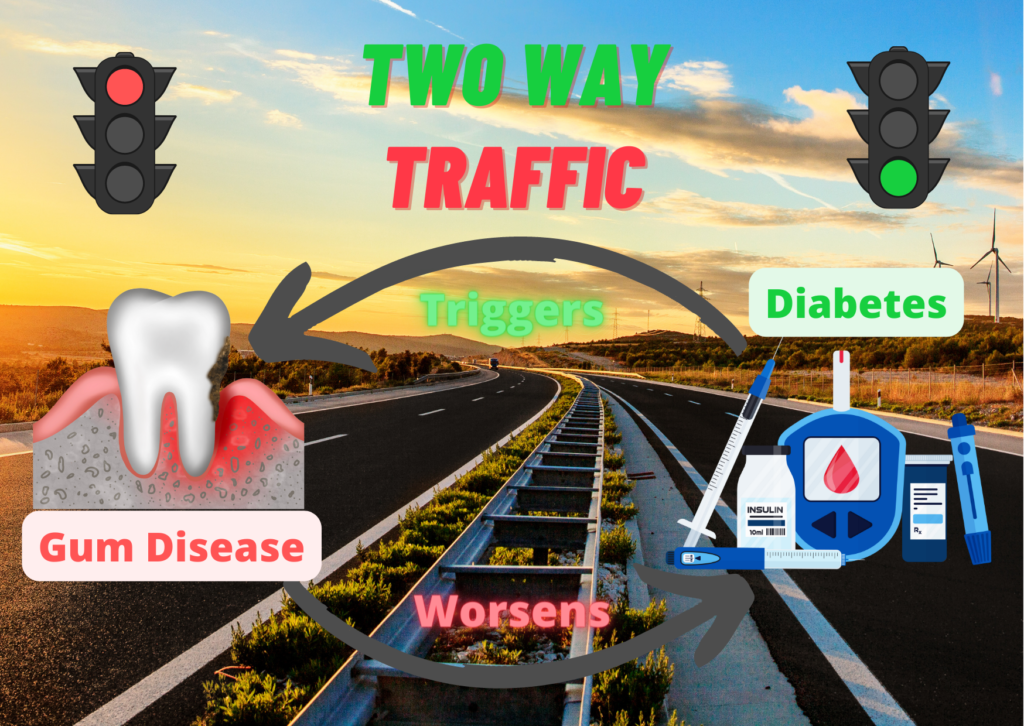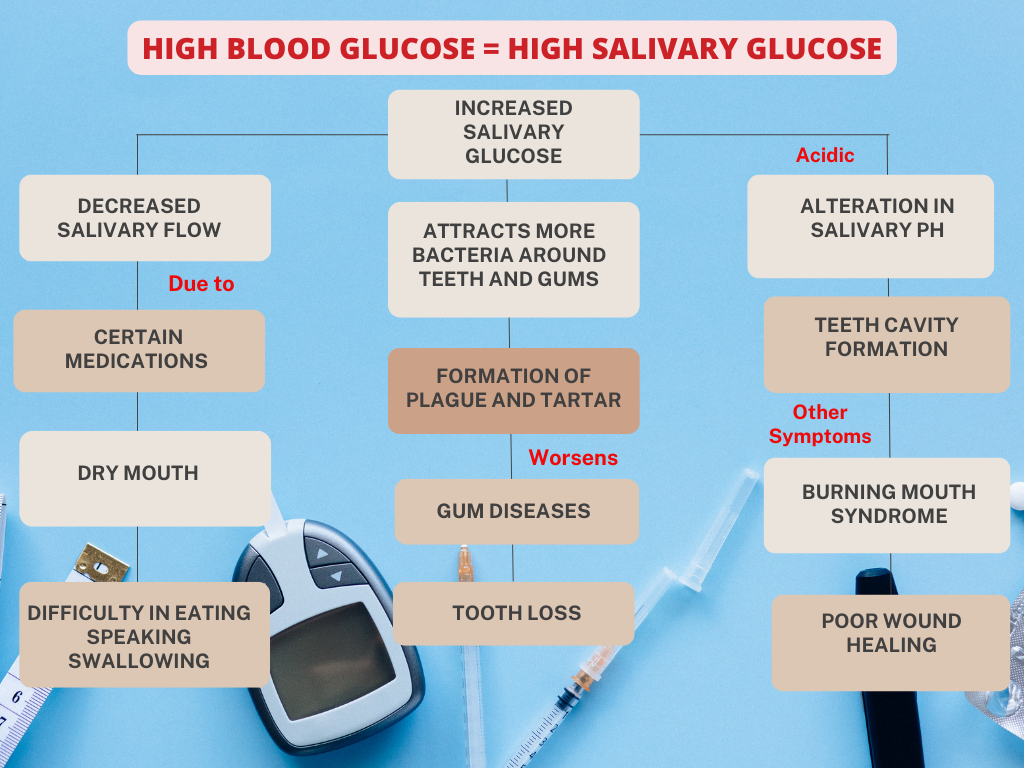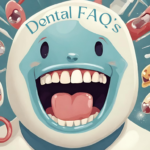
We are living in an era where 1:5 individuals are diagnosed as Diabetics!!
Diabetes is a NON-COMMUNICABLE DISEASE categorised under “LIFESTYLE DISEASE”, which is caused due to “lack of physical activity, unhealthy eating habits, consuming lots of processed, refined foods, excessive tobacco and alcohol consumption.
BLOOD SUGARS
As you are all aware, Diabetes is a group of disorders characterised by high blood sugar/glucose affecting many parts of the body, including “OUR MOUTH/ORAL CAVITY.”
HAVOC INSIDE OUR MOUTH
The increased blood sugars (GLUCOSE) affect our gums and the supporting bones, teeth, and soft tissue of our mouth by interfering with the “SALIVA AND ITS CONTENT” secreted inside tiny salivary glands of our oral cavity.
SALIVA-THE CLEAR FLUID
Saliva is a clear fluid, primarily 99% water; the rest 1 % consists of proteins and electrolytes. Saliva plays a vital role in preventing dental diseases and maintaining oral health, thereby improving overall general health!!
KEY FUNCTIONS OF THE SALIVA
- Protection of the oral tissue
- Enabling speech,
- Facilitating eating
- Enhancing chewing,
- Assisting digestion and swallowing
One of the critical factors affecting the saliva and its functions is undiagnosed / uncontrolled/ untreated blood sugars for an extended period of duration, which directly increases salivary glucose levels!
IMPACT OF HIGH SALIVARY GLUCOSE ON THE GUM TISSUES & TEETH

THIS ONE-WAY TRAFFIC BECOMES A TWO-WAY
When a Diabetic individual does not maintain his oral hygiene properly will have variable and fluctuating blood sugar levels irrespective of any “DIABETIC MANAGEMENT PROTOCOLS”.
Hence every Diabetic individual needs to undergo routine Dental check-ups as part of their Diabetic management programme.
To assist in your routine care, take up this “SELF TEST- ORAL CARE TEST”.









